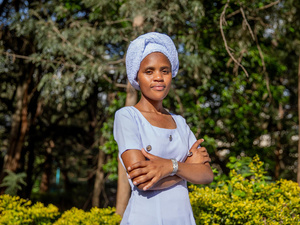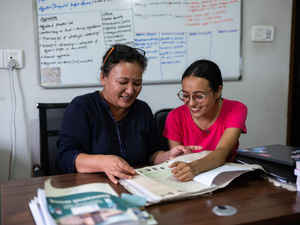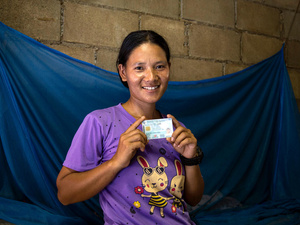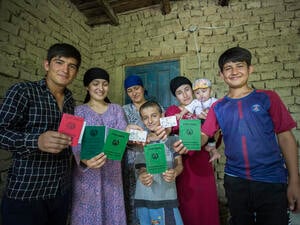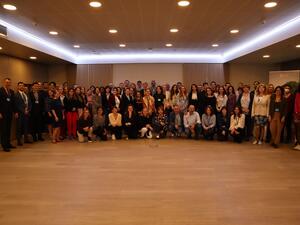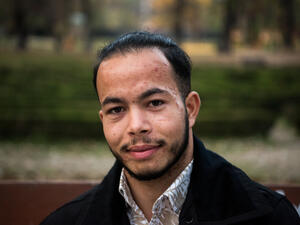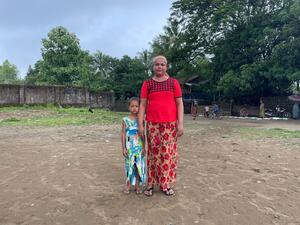Q&A: The realistic goal of ending statelessness in Europe by 2024
Q&A: The realistic goal of ending statelessness in Europe by 2024

UNHCR Director for Europe Vincent Cochetel addresses a conference.
GENEVA, June 1 (UNHCR) - In Europe, we take many things for granted such as access to education, health care, employment and travel, but some 600,000 people across the continent still do not enjoy these basic rights. They are stateless. Last year, UNHCR launched a major campaign, #IBelong, to end the suffering of an estimated 10 million stateless people across the world by the year 2024, including those in Europe. Non-governmental organizations, as members of the European Network on Statelessness, are a key partner in this goal of ensuring that everyone in Europe has a nationality. They and UNHCR officials will be meeting in Budapest on Tuesday and Wednesday at a conference focusing on the need to help stateless children. UNHCR Director for Europe Vincent Cochetel spoke to Senior External Relations Officer Roland Schönbauer here about the strategy to end statelessness and the risks of more people becoming stateless. Excerpts from the interview:
Tell us about UNHCR's objectives for statelessness in Europe?
Making statelessness disappear is a realistic objective in Europe. A lot of mapping of stateless populations has been undertaken; the problem is identified and manageable. I am convinced that all European countries will become state parties to the statelessness conventions before the end of the [UNHCR] #IBelong campaign in 2024. By then, no child should be born stateless in Europe. This is doable. Reducing statelessness in Europe, to a large extent, is a question of political will.
In some countries, it is a matter of reaching out to stateless people in very remote places. They often need someone to help them with complicated administrative procedures.
What has been the biggest success of the #IBelong campaign to date?
Clearly the engagement of civil society is essential, as can be seen by the initiative to hold a continental conference on child statelessness. Civil society plays a role in raising awareness about the issue throughout Europe. Also, many people, especially opinion leaders, have learned about statelessness. They thought it did not exist in Europe. Now there is growing understanding that statelessness is fixable. Armenia, for example, just closed a gap in its citizenship law. Babies born in this country, who would otherwise become stateless, will now become Armenian citizens.
How important have our NGO partners been?
We in UNHCR value the strategic partnership with the European Network on Statelessness. Thanks to its members we have more insights into how the respective laws and their administration affect individual people. That expertise makes the difference in our conversations with governments. Some NGOs, in Serbia, Bosnia and Herzegovina and the Former Yugoslav Republic of Macedonia, for example, have made significant progress in relation to the Roma population. Thanks to their evidence-based approach, their commitment to work with communities, and thanks to their understanding on how to address their mistrust towards the administration, we are making progress.
So it's all progress in Europe?
One concern I have is the requalification of failed, non-returnable asylum-seekers as stateless. This approach is dangerous. These are two issues. If we misrepresented all these failed asylum-seekers as stateless, this would be a wrong legal shortcut. By trying to equate these concepts, some NGOs are telling the governments that at the end of a long and costly asylum procedure they need to re-screen everybody to see whether they are stateless.
Some governments will conclude quickly - and in the view of UNHCR wrongly - that NGOs want everybody to stay. Some rejected asylum-seekers cannot be returned for reasons different from statelessness. You have governments that do not take back their own nationals . . . And you have individuals who do not cooperate in identifying their nationality so that their nationality remains unclear.
Which are the main obstacles to ending statelessness in Europe?
I see three major obstacles. One is statelessness at birth among populations living in precarious conditions. These are mainly Roma, Ashkali and Egyptian minorities in the Balkans, but also in Central Europe. Even when the parents do have a nationality, you are never sure it will be transmitted to the next generation.
Another obstacle is that a couple of countries, like the Russian Federation, are arguing that their domestic legislation provides better guarantees against statelessness than the two international instruments relating to statelessness [The 1954 Convention relating to the Status of Stateless Persons and the 1961 Convention on the Reduction of Statelessness]. We tell them that if their legislation is better, then it should not be a problem to accede to the two conventions.
The third obstacle is peculiar and found in the Baltic countries. There are stateless people who want to remain stateless because, this way, it is easier for them to travel to the Russian Federation. If statelessness is a choice, there is nothing we can do about it. However, we have been happy to see significant progress with legislation - a new generation acquires the nationality at birth in Estonia and Latvia, and elderly people do not have to fulfill heavy linguistic requirements for their naturalization.
What role can the European Union play?
We hope that the European Commission will position itself more clearly and combat statelessness. There are some legal constraints as the right to a nationality is not a European competency per se. We are trying to mobilize a larger group of actors in the European Union and the Council of Europe, but also parliaments. We still need to raise awareness to encourage some governments to make the changes needed.
When you talk to governments, do you encounter empathy for the stateless?
The level of empathy is good; the level of understanding of the issues shows room for improvement. There are limits to our institutional advocacy. That's why we encourage strategic litigation to get some of the situations fixed by the judiciary. One issue with potential for litigation is family reunification for stateless men and women, which is a fundamental European right and found in many national laws. This right is particularly difficult to access for stateless people.
Do you see any major risk areas?
I see one major risk area: We thought there would be no more wars and displacement in Europe. The conflict in Ukraine [which has displaced 1.3 million people] has been a reminder that there is no such guarantee . . . There were stateless people before the conflict, and others like the Roma community may have difficulties with civil registration which represents a new risk of statelessness.
Despite this risk, with political will, I am convinced ending statelessness by 2024 is a realistic objective in Europe.

